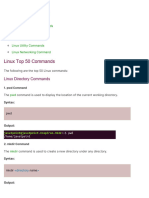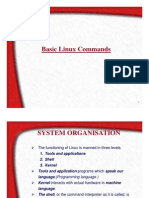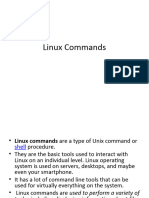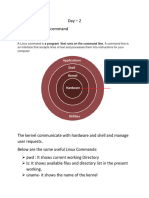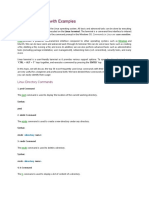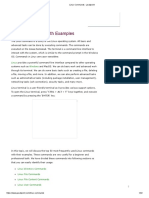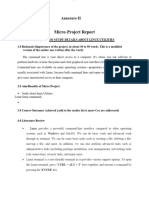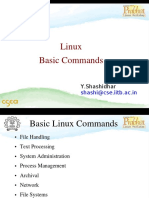0% found this document useful (0 votes)
265 views6 pagesLinux ppt-2 Basic Commands (Autosaved)
Chapter 2 covers basic Linux commands, including directory, file, user, filter, utility, and networking commands. It details specific commands such as pwd, mkdir, rmdir, ls, cal, clear, date, df, echo, exit, expr, and factor, along with their syntax and purpose. This chapter serves as a foundational guide for navigating and managing files and directories in a Linux environment.
Uploaded by
laita nikamCopyright
© © All Rights Reserved
We take content rights seriously. If you suspect this is your content, claim it here.
Available Formats
Download as PPTX, PDF, TXT or read online on Scribd
0% found this document useful (0 votes)
265 views6 pagesLinux ppt-2 Basic Commands (Autosaved)
Chapter 2 covers basic Linux commands, including directory, file, user, filter, utility, and networking commands. It details specific commands such as pwd, mkdir, rmdir, ls, cal, clear, date, df, echo, exit, expr, and factor, along with their syntax and purpose. This chapter serves as a foundational guide for navigating and managing files and directories in a Linux environment.
Uploaded by
laita nikamCopyright
© © All Rights Reserved
We take content rights seriously. If you suspect this is your content, claim it here.
Available Formats
Download as PPTX, PDF, TXT or read online on Scribd
/ 6





